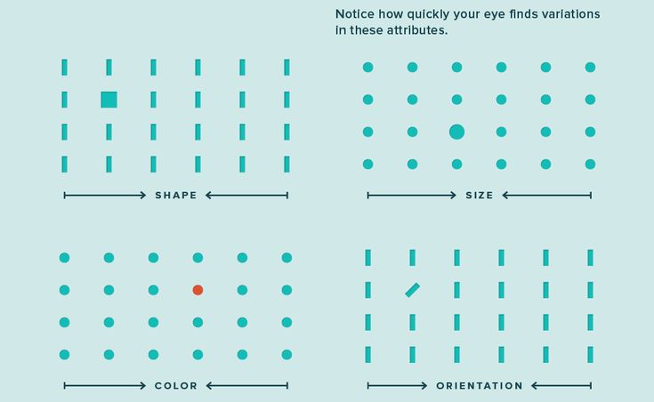Stay updated!
The best customer experience content delivered right to your inbox.
Body Language Matters: Why Your Team Needs Visual Clues to Better Support the Customer
by UJET Team |
You have your FAQs written, your chat platform up and running, and your customer service team trained and ready to go.
But even with all your preparation, you might have missed one key ingredient for establishing and maintaining valuable customer relationships: visuals. Visual methods of communication, like video chat, screenshots, and even graphic illustrations, improve understanding and clarity, making it easier for your customer support team to communicate with and assist your customers.
Here are five reasons why you shouldn’t overlook the advantages of visual communication when creating a helpful customer service experience.
1. Visuals help you communicate quickly and clearly
Customers can understand visuals in less than one-tenth of a second. That’s much faster than any other type of communication.

Your eyes can easily pick out visual differences, including shape, size, color, and orientation via Shift.
There are a number of advantages in harnessing the brain’s ability to comprehend visuals. Visuals allow your customer service team to easily explain complex solutions to customers.
Imagine trying to talk to your customers through the steps needed to reset their thermostat’s schedule. Now imagine how that explanation might go with the addition of screenshots or a video. Including these visuals makes the process much easier for the customer to comprehend.
Real-time sharing of visuals also helps the customer easily explain the problem they’re running into or the question they have. This helps your support team quickly understand what’s going on and come to a resolution much sooner.
Think of ways to include visuals in your customer service strategy, like illustrations or photos of your self-service content. Anytime you use text to lead customers through a process or to explain what a certain feature does, try complementing the words with visuals to improve understanding.
2. Visuals are easier to remember
Sometimes it seems like what customers hear goes in one ear and out the other. Studies have shown this to be true — when customers hear information, they’ll likely only remember 10 percent of it three days later.
But when you include a visual, people are likely to remember 65% of that information three days later.
That’s a huge difference, and it just goes to show how powerful visuals can be when your agents have to provide clear and concise directions. It also reduces the chance your customers will get frustrated when they try to recall those directions later.

Road signs are a great example of visual communication as they don’t always need text to remind you what they mean.
Memorable visuals, like product demos, make it easier for current customers to remember how to find certain features as well as how your product works. Product demos also attract new customers and allow them to experience what your product has to offer while still in the consideration stage.
Your support team doesn’t need a full-time videographer to make this happen. All you need to start out is your iPhone or Android device, good lighting, and a tripod. Begin by filming answers to common questions or walking through how to set up a particular feature and add them to your self-service content, blog, and social media.
3. Video chat opens the door for personalized experiences
Video chat helps your support team and your customer work on a problem together. Video is unique because it allows your customer to visually share their experience. They might hold their phone up to show you the problem they’re running into or illustrate the issue in another way onscreen. These visuals allow your support specialists to quickly assess the situation, then start the conversation with open-ended questions.
Video combined with open-ended questions provide much more valuable context than a text-only chat driven by a script — and your customer will feel more valued thanks to a unique conversation tailored to their needs.

Video chat allows your customers to reach out whenever it is most convenient for them.
One easy way to add open-ended questions to your customer support conversation is by asking your team to start out by inquiring “How can I help you?” or “What can I do for you today?” This keeps the conversation on track but also opens the door for customers to fully explain what’s going on.
4. Live video lets your customer care team pick up on non-verbal communication
Live video chat not only helps your support team and customers quickly understand problems and solutions, it provides insight into body language.
Body language, or non-verbal cues, are an important indicator of underlying attitudes and issues that your customers may not be sharing with you out loud. Facial expressions, posture, and eye contact are just a few ways non-verbal cues can tell you when a customer is confused, upset, or genuinely happy with the answer they’ve received. Knowing this allows your team to adjust their responses, ask more questions, and avoid ending a call or chat with a customer who’s still upset.

Video chat helps you clearly identify body language and non-verbal cues.
Non-verbal cues can also enhance your customer relationships. Just like your support team can pick up on body language from your customers, your customers pick up on how genuinely eager your customer service agent is to help — or whether they’re bored, distracted, or annoyed.
Learning to read body language can take practice, but it’s easy to get started. There are a number of online and in-print resources that your team can check out to get comfortable. Here are a few to start with:
- Mind Tools’s body language guide
- Lynne Franklin’s TEDx Talk “Reading Minds Through Body Language”
- “What Every Body is Saying” by Joe Navarro
5. Video chat can personalize your brand experience
Videos and video chat can put a face to a name, reassuring your customers that they’re speaking with an actual person who’s there to help and who empathizes with their problem. Opting for a text-only chat with a generic stock photo to represent your support team won’t have the same kind of impact and can make the customer feel less valued and erode trust.
Every touchpoint you have with your customer is another chance to add value to your relationship with them, improve their loyalty, and increase the chances they’ll recommend you to others. That’s why word-of-mouth is so powerful; 90 percent of people are more likely to buy a brand that was recommended by a friend or family member — recommendations that drive $6 trillion in annual spending.

Your customer support team directly influences how customers view your brand and the chance they’ll recommend it to others.
So don’t settle for the easy way out with stock photos and bored employees. Push your support team to share their authentic faces and personalities. Take time to snap friendly portraits and use those as chat avatars. And remind your team that a smile can make or break a conversation — even if it’s only over the phone.
Visuals improve your customer relationships
The value of visuals in your customer care strategy is clear. They improve clarity and understanding between your support team and your customers, which further improves your customer retention and even sales. That’s a win-win for sure.
Ready to add visuals to your customer support strategy? Here’s how:
- Use customer service software that supports the sharing of visuals, like UJET smart actions.
- Add visual, step-by-step directions and video demonstrations to your self-service content.
- Consider adding video chat and encourage your support staff to use open-ended questions.
- Train your customer care team to pick up on non-verbal communication — and demonstrate positive body language.
- Ditch the scripts and stock photos for personalized conversations and photos of your actual team members.
The best customer experience content delivered right to your inbox.